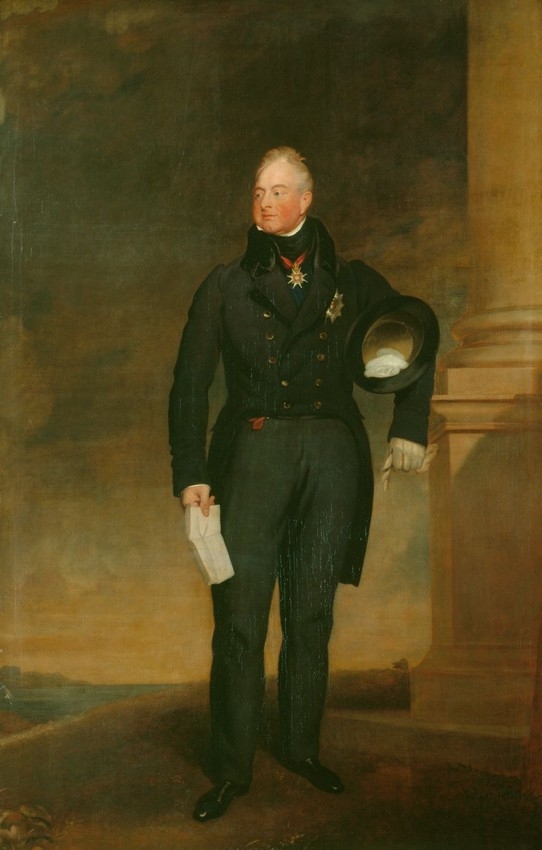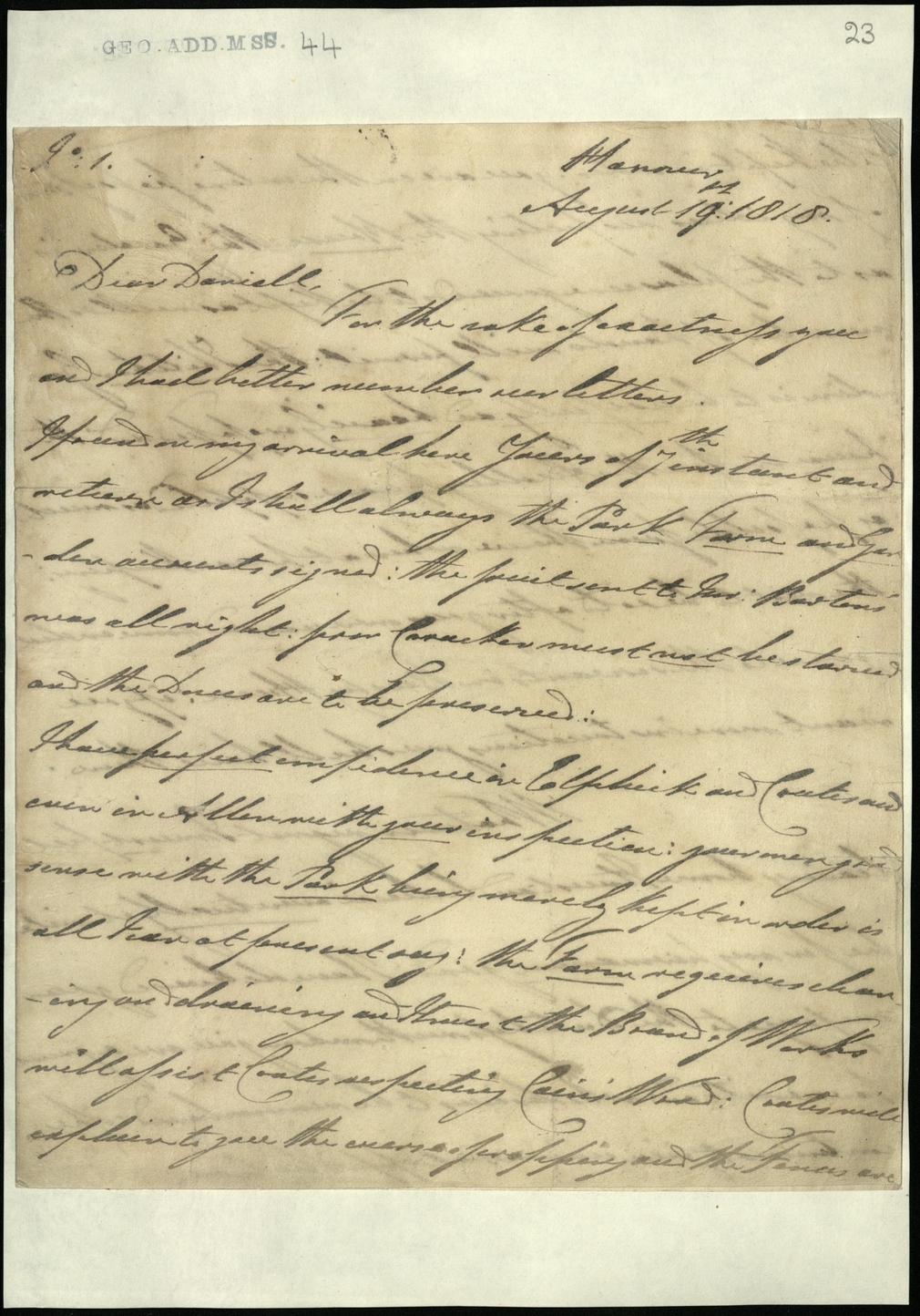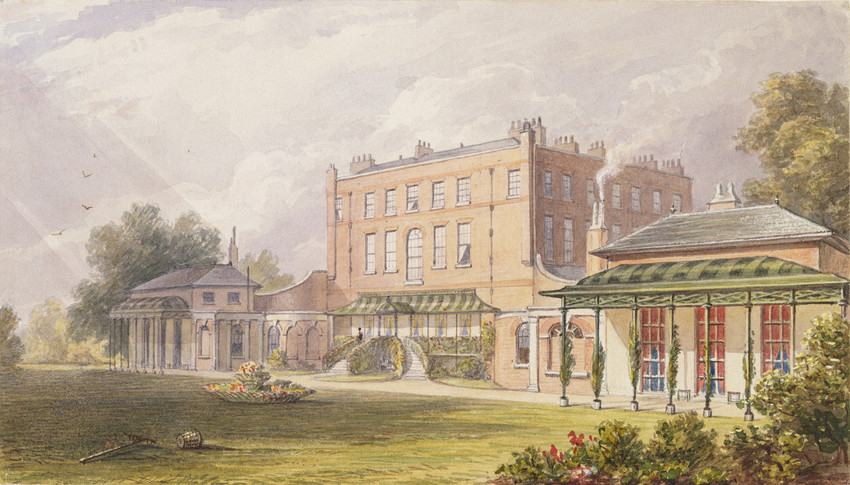
William IV as Duke of Clarence, RCIN 405427 ©
The bulk of the Daniell papers (about 100 letters out of 118) consists of letters written by William IV as Duke of Clarence and King, to James William Daniell (1773-c.1855). Unfortunately, very little is know about Daniell’s life, but it appears that he was firstly hired as tutor to the FitzClarence’s children (George, Henry, Sophia, Mary, Frederick, Elizabeth, Adolphus, Augusta, Augustus, Amelia; the children William had with his long-term mistress Dorothea Jordan). Once the children had grown up, Daniell became librarian to their father and, later, his steward at Bushy House until around 1826. According to Claire Tomalin (Mrs Jordan’s Profession, 1994) Daniell’s letters to the FitzClarence’s were preserved and handed down through the family and are now in the hands of Daniell’s great-great-great niece, Diana Daniell. Moreover, additional letters of the Duke of Clarence, Sophia FitzClarence and others, are held in the De L’Isle Archive at Maidstone.
The Daniell papers in the Royal Archives reveal little of Daniell’s personal life but revolve entirely around his patron William IV.
Financial troubles
The correspondence dates from after William’s marriage to Adelaide of Saxe-Meiningen on 11 of July 1818, when William found himself in financial difficulties. Denied further help from the House of Commons, the Duke and Duchess could not afford to live in England and decided to spend some time on the continent, particularly in Hanover (where William’s brother, the Duke of Cambridge, was still Governor General) and other towns in Germany, home country of the Duchess. William, however, struggled to enjoy this period abroad as his mind always returned to Bushy House.

Letters from William, Duke of Clarence, to J.W. Daniell concerning Bushy House, 1818, GEO/ADD/44/23 Royal Archives /© Her Majesty Queen Elizabeth II 2019
The intense correspondence between William and Daniell during this time, is clear evidence of that: writing from Hanover, Meiningen, or Ems, William continuously asked to be updated about the works in the house and in the garden (he even demanded for the list of new seeds to be sent to him to be approved!), the state of the farm, stocks and crops, as well as the behaviour of his servants. Although he had great confidence in Daniell, he wanted to have everything under his own control and to be consulted before any decisions were made.
Farming practices
The correspondence also offers several illuminating insights into contemporary farming practices. For example, the letters include a long conversation about the relative merits of the flail and the threshing machine, which was just been introduced and led to widespread riots in 1830 – as the farmers were concerned the increasing use of machines could replace their labour. The marked interest in farming and agriculture shown by the Duke is an unexpected finding – after all, he has always been known as the Sailor King. In light of these considerations, it is safe to say that the collection of Daniell’s papers should be seen as an integral source in the study of William IV.

Bushy Park, c.1842 RCIN 919722 ©
Family
Besides the correspondence between William and Daniell, the other papers in the collection also show their strong connection to the King and his family:
- (4) letters from the Duke of Clarence to Miss Sketchley (possibly a governess to William’s illegitimate children)
- (6) letters from the Duke of Clarence to Lieutenant General Samuel Hawker
- (4) letters from George Augustus Frederick FitzClarence, 1st Earl of Munster, to Daniell
- (3) partial letters from Sophia FitzClarence to Miss Turner (Sophia’s companion-governess), accompanied by a transcriptions and other letters written to Miss Turner during the period when Sophia was in Paris (in 1815)
- a letter from Sophia FitzClarence to her brother George FitzClarence; a letter from Lord Mulgrave to the Duke of Clarence; typewritten, biographical sketches (27 pages) of the FitzClarence Family.
